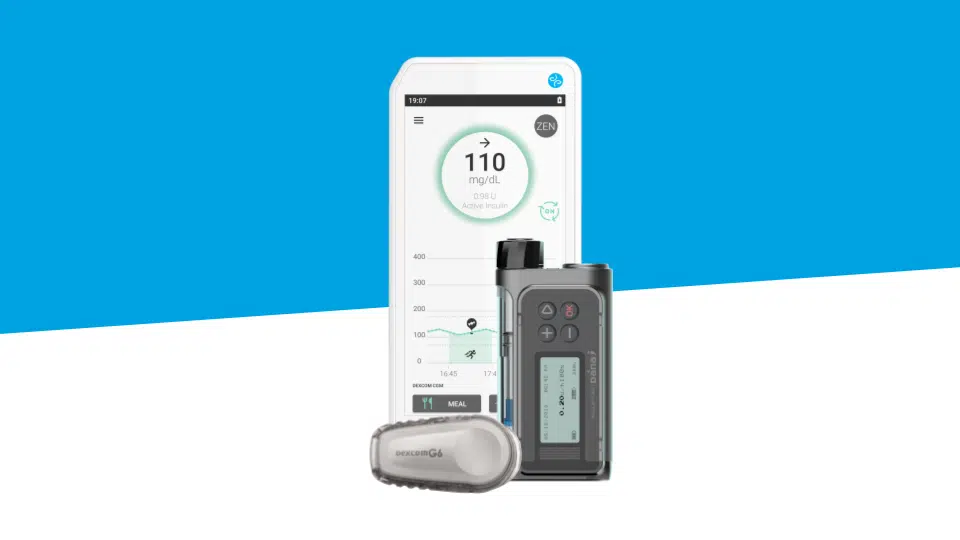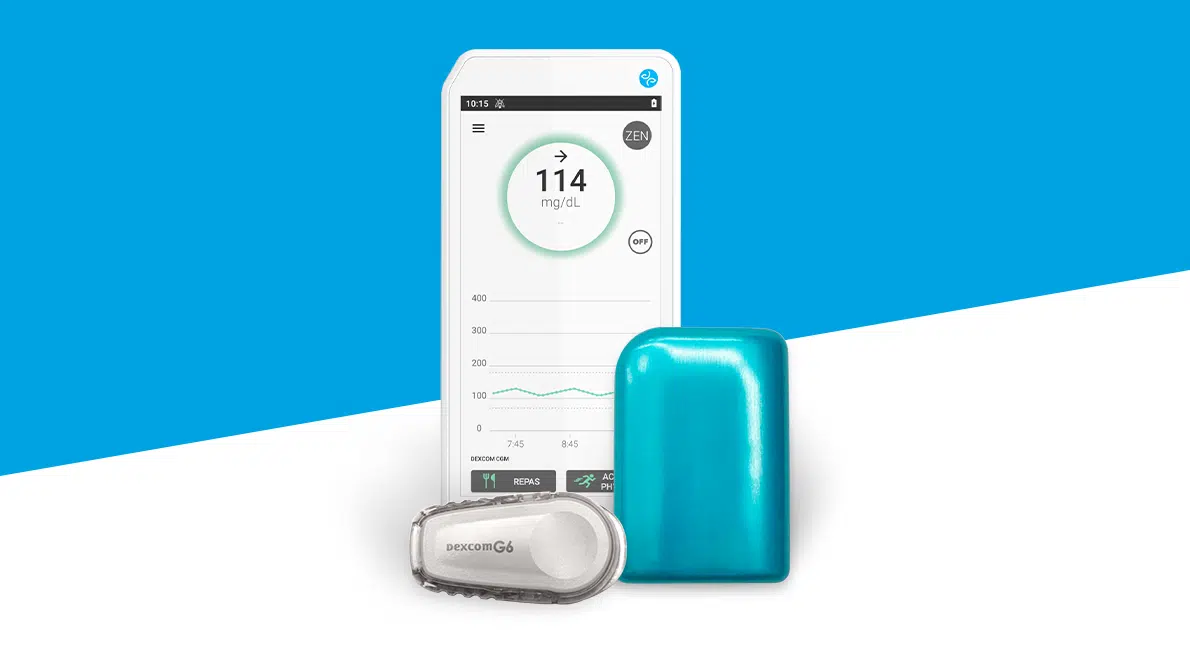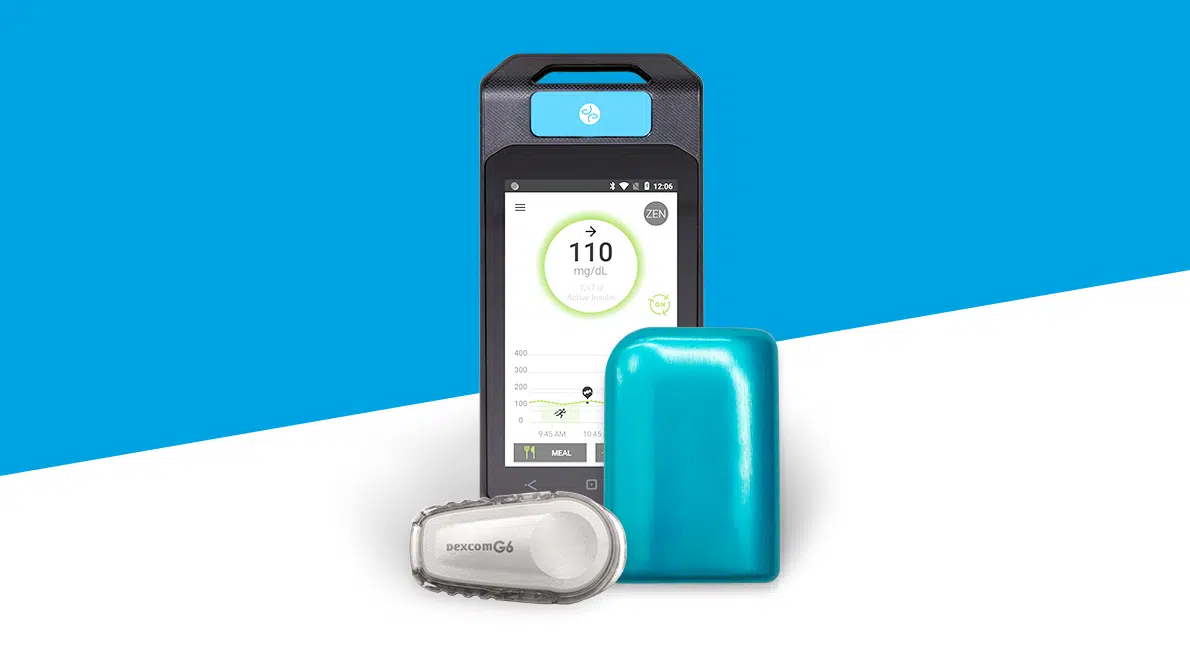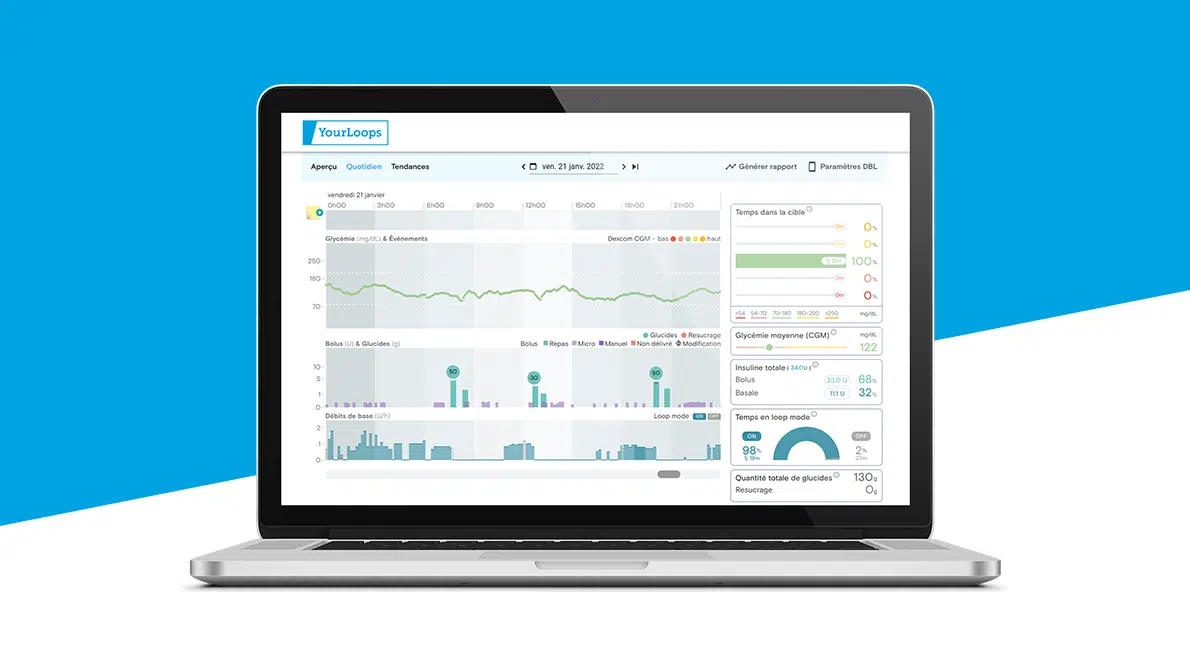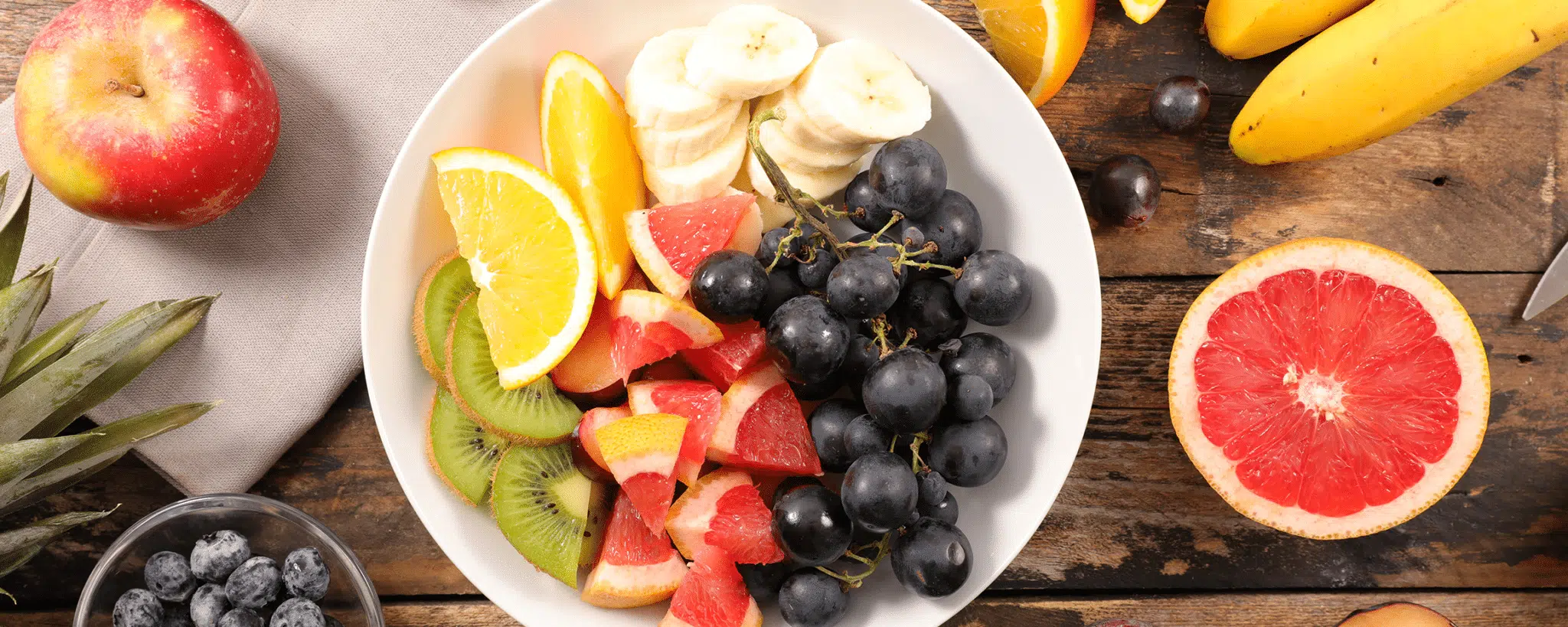
Eating Fruits with Type 1 Diabetes
“Fruits to avoid if you have diabetes,”, “Can I eat fruit if I live with Type 1 diabetes?” “Fruits you can eat with diabetes”… seriously, enough with the misconceptions about fruits fort Type 1 and 2 diabetes! We’re going to explain why it’s entirely possible to enjoy fruit (even with Type 1 diabetes!) and give you some advice for incorporating it into your diet in a balanced manner. And as a bonus: thanks to our extensive diabetes fruit list, their glycemic index, and their carbohydrate count, you won’t have any work to do before sinking your teeth into your favorites!
How Can You Enjoy Fruit When Living with Diabetes Type 1 and 2?
Rich in vitamins, fiber, antioxidants, and minerals (calcium, magnesium, iron, potassium, and more), fruit is a food that has a lot of nutritional benefits. And living with diabetes doesn’t mean you have to deprive yourself of fruit! Incidentally, for people with Type 2 diabetes, eating fruit can even help you control your weight.
Like with any kind of food, the most important thing when eating fruit while living with diabetes is controlling your sugar intake. This is tied to the fruit’s carbohydrate content and glycemic index (GI); you will need to pay attention to both of these elements in order to manage your blood sugar levels throughout the day.
Learn more : Nutrition and Type 1 Diabetes: The 4 Key Principles
Fruit and Diabetes: How, and How Much?
For T1D (and also T2D) people, you’re generally advised to eat raw fruit instead of fruit that has been altered (whether by cooking or other means). The reason is simple: fruit purees, sauces, jams, juices, syrups, sorbets, etc. have a higher glycemic index. The preparation for all of these foods requires cooking the fruit, which breaks down some of the nutritious components while concentrating the sugars.
People who have diabetes are also advised to limit their fruit consumption to three servings per day. To manage your intake, consider a single serving of fruit to be 14-20g of carbohydrates. This will usually be about as much as you can fit in the palm of your hand.
Good to know: the riper the fruit, the higher its sugar content—especially with bananas. So keep that in mind when you’re reading our table of fruits, their glycemic index, and their carb content down below. 😊
When Should You Eat Fruit When Living with Diabetes?
To better control your blood glucose levels and your insulin doses (whether you use a pump, a pen, etc.), it’s a good habit to spread out your fruit consumption over the course of the day—for example, one serving at breakfast, another at lunch, a snack late in the day, and so on. Some dieticians also advise eating fruit toward the end of a meal, in order to let you digest it at the same time as the rest of the food, which allows your blood sugar to rise more slowly.
Diabetes: Are There Fruits to Prioritize or Avoid?
We’ve often read or heard that some fruits are discouraged (many articles talk about the 5 worst fruits to eat with diabetes, etc.)—or are off-limits altogether—when you have Type 1 diabetes. This is false! There’s no such thing as “fruits to avoid” when living with diabetes.
Here’s the explanation: some types of fruit have higher levels of sugar and a higher glycemic index than others. So the fruits that are often considered “advisable” are the least sugary fruits and those with the lowest glycemic index, because their consumption requires less blood sugar. And following that logic, people with T1D are usually advised to avoid the most sugary fruits.
However, the requirement is simply that you control your sugar intake. You don’t have to give up your favorite kinds of fruit when living with diabetes; you just have to control the quantities that you eat, always keeping their glycemic index in mind so that you don’t get a blood sugar spike.
Learn more: How To Read and Understand Nutritional Labels
Fruits with Less Sugar vs. Fruits with More Sugar
Just to give you an idea, among the fruits considered to have a lower sugar content (meaning less than 11g of sugar per 100g of fruit), you get apricots (9g), different types of melons, cantaloupe for example (6.5g), quince (6.3g), strawberries (4g), and citrus fruits like clementines (11g), oranges (8.04g), and lemons (1.69g).
On the other hand, among the fruits high in sugar we find bananas (20.5g), cherries (14.2g), and figs (13.4g).
Numbers and more numbers—don’t panic! As mentioned, we’ve prepared a complete list, including a wide variety of fruits for Type 1 and 2 diabetes with their carbohydrate counts and glycemic indices, just down below. 😊
Fruits That Are Rich in Fiber For Diabetes
The sugar content of a fruit is important, but it’s not the only thing to pay attention to. If you have diabetes and you’re trying to figure out how to eat fruit without spiking your blood sugar, you should also take a look at a fruit’s fiber content. Nutritional fiber is known to improve your body’s control of its blood sugar. Some fiber-rich fruits include strawberries, apricots, plums, and prunes.
Table of Fruits for Type 1 and 2 Diabetes: Glycemic Index and Carb Count
To help you integrate fruit into your diet while controlling your blood sugar, we’ve put together this list of fruits for diabetes mellitus, with their glycemic index and their carbohydrate count in grams per 100g of fruit. It is a lot easier to identify high and low GI-fruits for diabetes, when needed. Citrus, red fruits, summer fruits, or exotic fruits…take your pick and enjoy!
| Fruit | Glycemic Index | Carb Count, in grams, per 100g of fruit |
| Apples | 38 | 11 g |
| Apricots | 57 | 9 g |
| Bananas | 65 | 22,8 g |
| Blackberries | 25 | 10 g |
| Blueberries | 25 | 10,60 g |
| Cantaloupe melons | 67 | 6,50 g |
| Casaba melons | 35 | 11 g |
| Cherries | 63 | 14,20 g |
| Clementines | 30 | 11 g |
| Dates | 103 | 67,03 g |
| Dragon fruit | 48-52 | 13 g |
| Figs | 38 | 13,40 g |
| Grapefruits | 25 | 6,20 g |
| Grapes, green | 45 | 16,10 g |
| Grapes, red or purple | 53 | 15 g |
| Guava | 63 | 14,3 g |
| Honeydew melons | 65 | 9 g |
| Kiwi | 52 | 8,44 g |
| Kumquats | 40 | 9,60 g |
| Lemons | 25 | 1,69 g |
| Limes | 20 | 2,25 g |
| Lychees | 50 | 14 g |
| Mangos | 51 | 13,50 g |
| Nectarines | 35 | 8,90 g |
| Oranges | 42 | 8,04 g |
| Papaya | 56 | 9,90 g |
| Passion fruit | 30 | 9,40 g |
| Peaches | 56 | 8,19 g |
| Pears | 38 | 9,15 g |
| Persimmons | 50 | 13,70 g |
| Pineapples | 59 | 11 g |
| Plums | 39 | 9,60 g |
| Pomegranates | 35 | 13,60 g |
| Prickly pear / cactus fruits | 35 | 10 g |
| Prunes | 30 | 60,6 g |
| Quince | 35 | 6,30 g |
| Raspberries | 25 | 4,20 g |
| Starfruits | 45 | 7 g |
| Strawberries | 25 | 4 g |
| Watermelons | 75 | 7,30 g |



